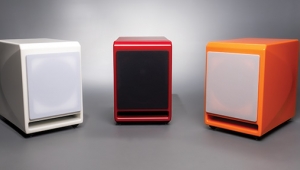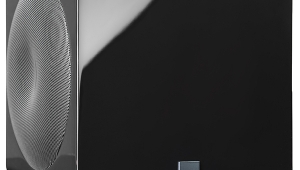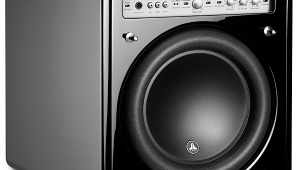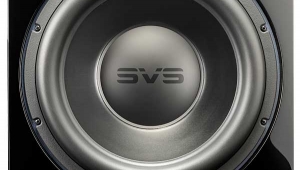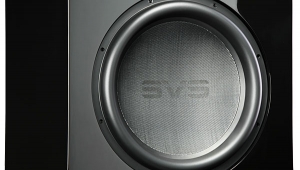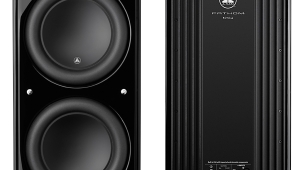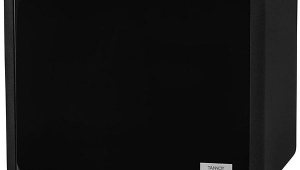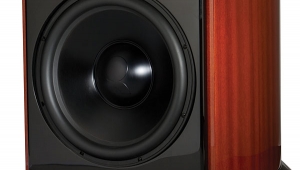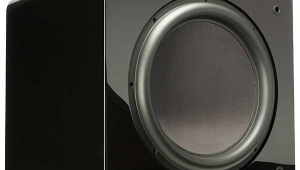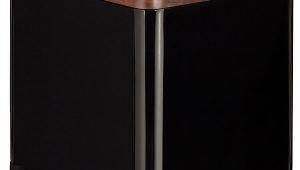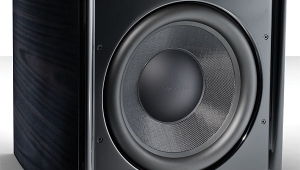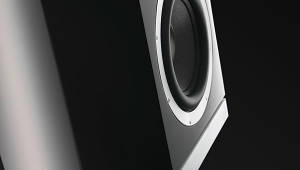| Columns Retired Columns & Blogs |
Paradigm Reference Servo-15 powered subwoofer
Émile Durkheim (1858-1917) once wrote, "The less limited one feels, the more intolerable all limitation appears" (footnote 1). Although directed at the paradoxical observation that suicide rates are higher in newly prosperous countries than in those mired in poverty, his comment applies equally well to subwoofers.
Footnote 1: émile Durkheim, Suicide, pp.246-260. The Free Press (Glencoe, IL), 1951.
Why? When an aftermarket subwoofer provides multiple adjustable settings for different satellite and main speakers and listening environments, an owner's choices greatly expand. If finding the best match means trying too many combinations of adjustments, the result is anomie—Durkheim's term for increasing stress associated with a breakdown in the subtle rules of social conduct.
 Which brings me to the Paradigm Reference Servo-15, a compact, self-powered, servo-corrected subwoofer with multiple control settings. John Atkinson, measuring the Servo-15 as part of the Paradigm Reference Active/450 system for J. Gordon Holt's review in the November 1998 issue of Stereophile Guide to Home Theater (p.98), noted that "the owner...enjoys considerable flexibility in getting the system to blend optimally in the room."
Which brings me to the Paradigm Reference Servo-15, a compact, self-powered, servo-corrected subwoofer with multiple control settings. John Atkinson, measuring the Servo-15 as part of the Paradigm Reference Active/450 system for J. Gordon Holt's review in the November 1998 issue of Stereophile Guide to Home Theater (p.98), noted that "the owner...enjoys considerable flexibility in getting the system to blend optimally in the room."
For this review, I tested the Servo-15 system with the Quad ESL-63, a bass-shy electrostatic speaker notoriously hard to blend with subwoofers. Would the Servo-15's elaborate controls facilitate a better match, or just produce anomie?
Description
I liked the ruggedness and build quality of this compact subwoofer the minute I pulled it out of its shipping carton. Its sealed enclosure is constructed from heavily braced, 1"-thick MDF, and a removable, MDF-framed grille snaps into the front baffle. Four ¼" plastic feet—replaceable with spikes—raise the Servo-15 off the floor. The rear, metal service panel contains the amplifier's heatsink and just two controls: a bass-level rotary dial, and a three-position power-on switch (Off, Signal Sense, Always On). This panel also has a detachable AC IEC jack for the AC power cord. That the Servo-15 accepts only a single line-level, unbalanced interconnect could be a problem: its lengthy single-ended cable—necessary to place the sub in an optimal spot in the listening room—could be more prone to hum than a balanced cable would be.
The massive 15" driver occupies most of the enclosure's front panel. Constructed from a sturdy composite reinforced with Kevlar fiber with a multilayer surround, the driver sits in a die-cast aluminum chassis. The cone has a 1" range of excursion. Its motor assembly employs three 6" ceramic magnets, and has a flared center vent—like a bass-reflex port—that reduces the "chuffing" sounds of air moved by the driver. Two shorting rings around the pole-piece help improve linearity and heat dissipation.
The voice-coil consists of a 2.1"-diameter aluminum former 1.4" long, to which is bonded the "instrumentation-grade" accelerometer. This is used by a closed-loop servo circuit to compare the subwoofer cone's movements to the input waveform. As well as the servo circuit, the 400W amplifier is controlled by a patented limiter circuit designed to prevent excessive driver motion.
The biggest physical difference between the Servo-15 and other aftermarket subwoofers is the external location of its controls. These reside in the X-30, a separate crossover module linked to the subwoofer by a heavy 23' RCA-to-RCA connector cable. The X-30 includes two filter networks, both with 18dB/octave slopes: an active high-pass for setting the lower-frequency extension of the satellite and main speakers, and an active low-pass for setting the upper-frequency extension of the subwoofer.
The front panel's continuous rotary controls allow you to set the subwoofer's level, tune the low-frequency cutoff between 35 and 150Hz, and adjust the Servo-15's phase between 0 and 180 degrees (footnote 2). The X-30's rear panel accepts single-ended inputs from the preamplifier, and there are two blended-mono output RCA jacks—one with adjustable phase, one without—for up to two Servo-15s. To drive the satellite/main speakers' amplifier, the rear panel sports 50Hz, 80Hz, and 120Hz RCA output jacks. AC power comes from a small wall wart, whose short cable plugs into the X-30's rear panel.
The ruggedness of its driver, the sturdiness of its mounting hardware, the satin feel of its cabinet—all in all, I found the Servo-15's fit'n'finish to be first-rate. In a marketplace of lookalike, vinyl-veneered, black-cube subwoofers, the Servo-15 stands out as one of the best built. Because of this high quality, I was disappointed that it did not have balanced XLR input/output connectors, defeatable high-pass filters, low AC voltage shutoff, or a wireless remote for adjusting its output from the listening chair.
Setup
I can't say I enjoyed installing the Paradigm Reference Servo-15 in my system—it took me more than three weeks to test different control settings and room locations. During this time I attempted—with varying degrees of success—to tune the Servo-15 to three different main/satellite loudspeakers: the Quad ESL-63, the Dynaudio 3.0, and the B&W 805 Nautilus. I used a signal generator, played all of my "special bass" CDs, and occasionally switched back to my comparison subwoofer, the Velodyne FSR-18, to recalibrate my ears. For all listening comparisons, the bass-level controls of the FSR-18 and Servo-15 were set to produce similar output levels of pink noise.
Footnote 1: émile Durkheim, Suicide, pp.246-260. The Free Press (Glencoe, IL), 1951.
Footnote 2: When JGH reviewed the Servo-15 in SGHT, he suggested that its phase control made sense when distances from the listener to the subwoofer and to the main speakers were not identical. Adjusting the phase of the subwoofer could prevent the cancellation of bass signals that reach the listener from different sources at different times.
- Log in or register to post comments
